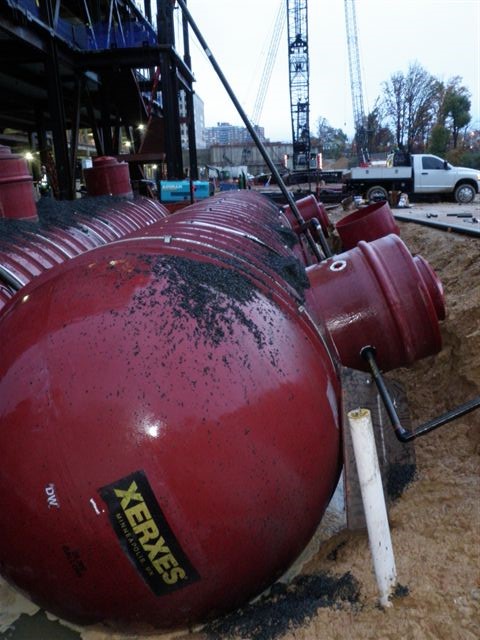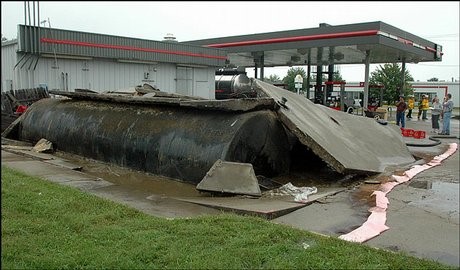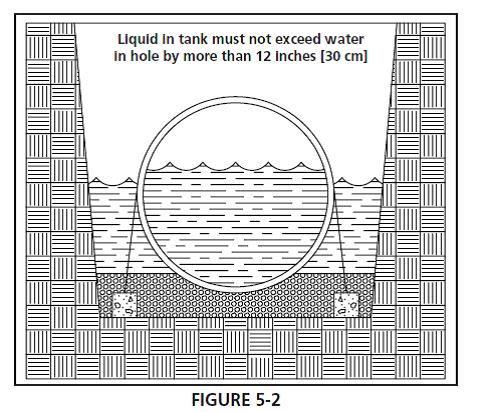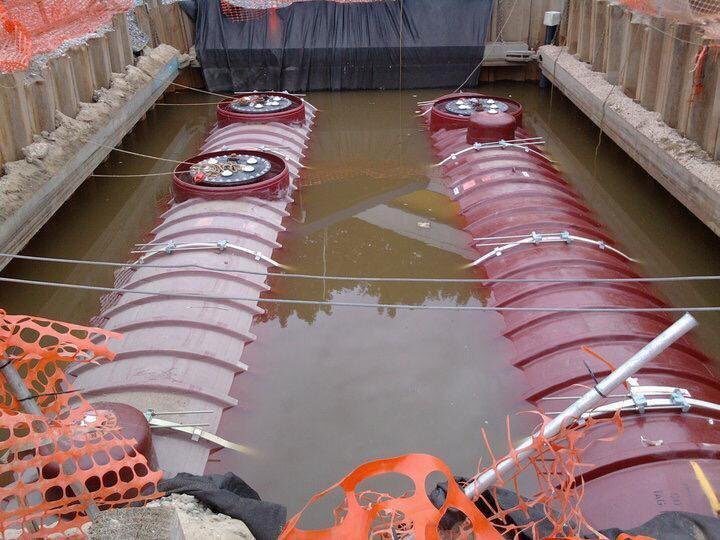“The Tank is Floating”
It was early on a Monday morning when we got the call that our customer’s underground tank was not the way they left it on Friday afternoon. The tank was “floating.” He was frantic, confused, and desperate to get the project back on track. The 20,000-gallon water tank had been placed on Friday and water had caused the empty tank to float, breaking the straps, cracking the tank, and causing damage that may render the tank useless. The piping attached to the tank was also damaged. What started as a simple supply order had turned into a nightmare costing our customers extra time and significant change order. Tank floatation is a serious problem that occurs when proper installation guidelines and procedures are ignored. Tank flotation can add an exorbitant amount of time and money (not to mention headaches) to your project. This week’s blog discusses how, and why, an underground tank can float and the steps you need to take to insure your tank is safe and secure.

Site Conditions Can Change Quickly
Groundwater and weather patterns are two natural elements you need to consider if you are installing an underground tank and, unfortunately, they are out of our control. In some parts of the country, high groundwater levels are extremely common. Properly designed systems will account for this condition by calculating buoyancy and adding countermeasures to the system such as deadmen anchors. High groundwater poses some complications during the construction and installation of the tanks, but there are standard ways of handling this condition including anchoring, ballasting, and pumping of groundwater during construction. Weather can change very rapidly during an installation, so this must be accounted for. Many tanks are placed in areas that tend to collect water and the backfill material (pea gravel, etc.) will tend to have a “bathtub” effect, causing water to collect around the tank during a rainstorm.

The Timeline of a Floating Tank
Often when we see a tank float, it is not one single issue that’s caused this failure but rather a sequence of missteps that have occurred. Every tank flotation could have been prevented by taking the proper precautions throughout the installation process. All of these are clearly described in the installation guidelines provided by the manufacturer of the tank.

An example can be found here:
Prevention of tank floatation is handled by the combination of design elements that must be utilized and all are needed to prevent tank floatation. These include the following:

- Anchoring – Typically, anchoring is handled with factory supplied deadmen anchors, but in some cases, full concrete hold-down pads are needed below the tank.
- Cover – Depth of cover is a critical piece of the anti-floatation puzzle. Until full depth of cover is placed, the tank is not fully protected from floating.
- Ballast – In many cases, placing water (or the liquid that will be stored in the tank) during the construction phase will provide ballast for the tank and assist with preventing floatation.
- Pumping – Pumping of groundwater during construction to keep the infiltration levels down is recommended until the tank can be completely backfilled.
Each of these precautions plays an important role in keeping the tank in place when water is present and all must be considered for every project where water is present or where water poses a threat to the site. As with any construction project, we must hope for the best but plan for the worst. Tank floatation is a real danger and should never be taken lightly during planning and construction.
Trust the Experts
Here at Tanks Direct, we understand the dangers of tank flotation, and we ensure that every customer is informed, knowledgeable, and equipped with the tools to properly install a tank if they are self-performing the installation services. A floating tank is usually, unfortunately, the result of overlooked information which is why it’s crucial to trust the experts when it comes to installing underground tanks. We live and breathe tank installations, and we are dedicated to making sure every project is a success for our customers. If you ever have a question about installing an underground tank, please don’t hesitate to contact us.
